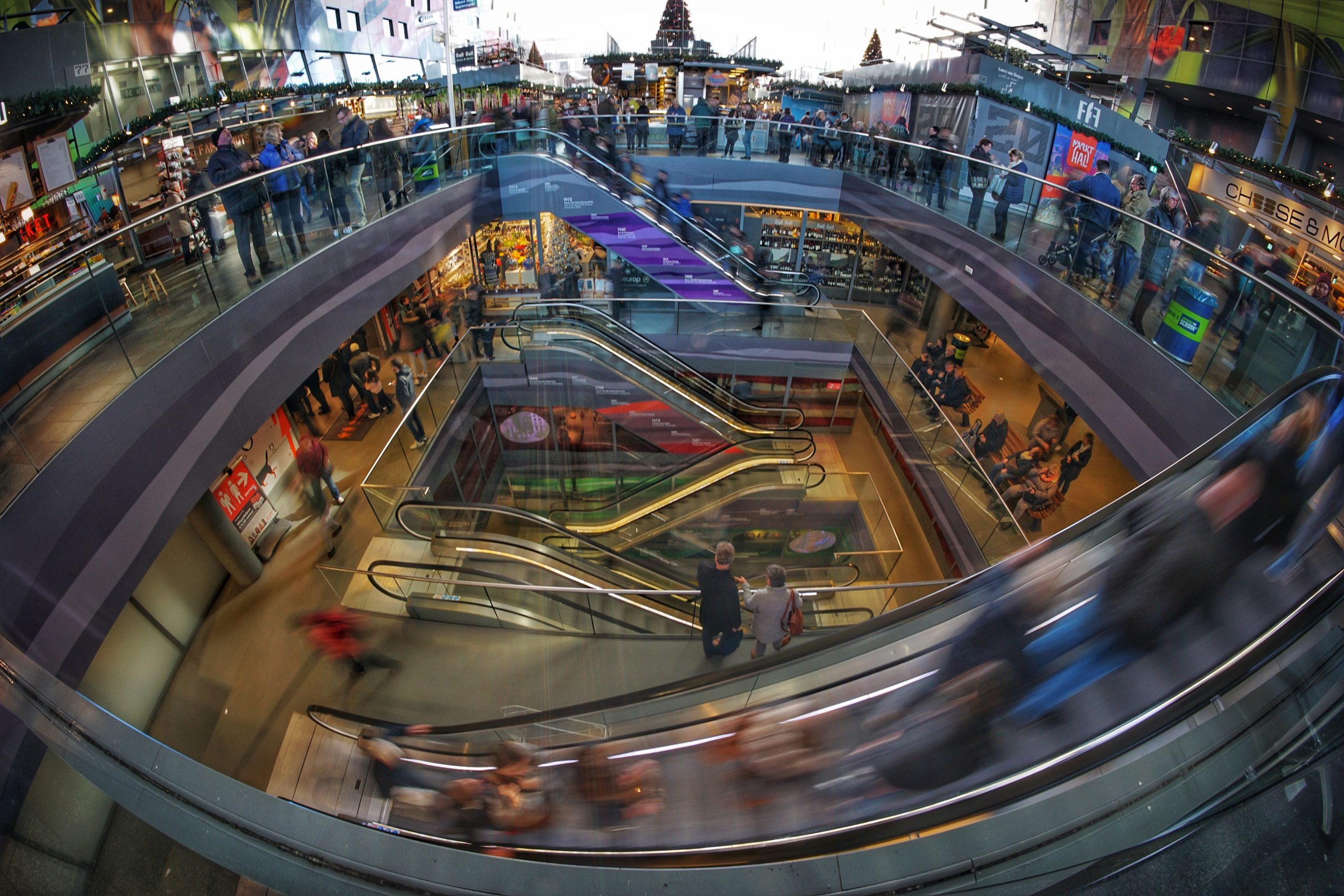Fashion industry: sustainable even beyond season?
The fashion industry has one of the most complex industrial supply chains: from design to sale, a product passes by other numerous intermediate steps, such as sourcing of materials, manufacturing and distribution, which more often than not take place in many different countries. Nowadays, apparel sourcing and manufacturing are concentrated in low-wage countries located far away from most major fashion and apparel consumer markets, where environmental, health and labour laws are either less strict than in Western countries or loosely enforced.
The collapse of the Rana Plaza building in Dhaka, Bangladesh, in 2013, where more than 1.000 workers remained killed and more than 2.000 injured, reminded consumers of the poor labour conditions workers, mainly women and children, are exposed to in the countries where their products are manufactured[1].
Other than the social (hidden) cost of the ready-garment sector, recent UN figures show that fashion has a significant impact on the environment as well. It is deemed to be “responsible for 20 per cent of global wastewater, 10 per cent of carbon emissions and huge amounts of waste”[2]. Yet, the fashion industry employs roughly 75 million people worldwide, mainly women, and contributes 2.4$ trillion to global manufacturing[3], making it a significantly rentable sector and a major source of revenue for countries that do not have a solid industrial sector.
To address the environmental and social impacts of the fashion industry and to contribute to the realisation of the Sustainable Development Goals (SDGs), UN agencies and partner organisations have launched the United Nations Alliance for Sustainable Fashion during the 4th UN Environment Assembly which took place in March 2019[4]. The scope of the Alliance is to support coordination between UN agencies and bodies working in fashion and promote projects and policies that decrease the social and environmental negative effects of fashion.
If the UN Alliance is only expected to work as a platform for UN agencies to make fashion more sustainable, at European level the textile sector is regulated through a variety of legal instruments that each deal with a separate issue.
First and foremost, textile products are covered by the Registration, Evaluation and Authorisation of Chemicals (REACH) Regulation, which determines the requirements for chemicals used during the textile production, as well as by the Industrial Emissions Directive and the EU Emission Trading System, which aim to address the emissions due to the industrial processes. In addition, the sector has a dedicated Textile Regulation that sets information requirements on the fibre composition of textile products. A EU Ecolabel for textile products is available and running[5], even though its uptake in the EU is not as significant as other product groups[6].
However, there are still no criteria on the sustainable performance of textile products in the EU. A significant criterion to evaluate the performance of textiles is their recycling rate. In the EU, recycling of textiles take place to a very limited extent, due to legal and material barriers. In fact, until the 2018 revision of the Waste Framework Directive that introduced an obligation for separate collection of textiles by 2025[7], these products were not collected separately and were disposed of through landfill or incineration. In addition, the number and composition of fibres, together with a limited, when not inexistent, knowledge on the type of chemical substances contained in the products still make recycling uncertain and, at times, even undesirable.
In addition, taking into consideration the fact that the EU remains a net importer of clothing[8], criteria on the sustainable performance of textiles should also take into consideration the externalities (both social and environmental) generated during the manufacturing of these products in the countries where it takes place. To date, social and environmental concerns are dealt with in the free trade agreements that the EU concludes with third countries. In the last decade, trade agreements concluded with sourcing and manufacturing countries all contain chapters on sustainable development, which include the respect for international labour and environmental standards, the enforcement of environmental and labour laws, and the respect for human rights[9]. However, as recognised by the European Commission services, the implementation and enforcement of these chapters need to be improved[10].
Faced with a multitude of uncoordinated instruments and initiatives and driven by consumers’ desire for sustainable and circular products, textile companies have either joined governmental and non-governmental partnerships or made their own sustainability commitments to be part of the solution rather than being targeted only as the source of the problem[11].
Even though industry seems to move faster than regulators, it could be desirable for the latter to regulate the most problematic aspects related to the textile industry (chemical composition, circular design, collection and disposal of textile waste, recycling, sourcing of primary material) to create a level-playing field between producer and importer, and to make sustainable clothes which can be fashionable even beyond their season.
[1] International Labour Organization, “The Rana Plaza Accident and its aftermath”, https://www.ilo.org/global/topics/geip/WCMS_614394/lang–en/index.htm.
[2] UN Environment, “UN Alliance for Sustainable Fashion addresses the damage of fast fashion”, .
[3] UN Environment, “Fashion’s tiny hidden secret”,
[4] UN Environment, “UN Alliance for Sustainable Fashion addresses the damage of fast fashion”, .
[5] European Commission, “EU Ecolabel Clothing and textile/ Textile products”, .
[6] European Commission, “EU Ecolabel Products/Services keep growing”, https://ec.europa.eu/environment/ecolabel/facts-and-figures.html.
[7] Directive (EU) 2018/851 amending Directive 2008/98/EC on waste, https://eur-lex.europa.eu/legal-content/EN/TXT/PDF/?uri=CELEX:32018L0851&from=EN.
[8] European Commission, “Commission Staff Working Document- Sustainable Products in a Circular Economy – Towards an EU Product Policy Framework”, .
[9] European Commission, “What is sustainable development?”, https://ec.europa.eu/trade/policy/policy-making/sustainable-development/#_trade-agreements.
[10] European Commission, “Non paper of the Commission Services – Feedback and way forward on improving the implementation and enforcement of Trade and Sustainable Development chapters in EU Free Trade Agreements”, https://trade.ec.europa.eu/doclib/docs/2018/february/tradoc_156618.pdf.
[11] See for example the Partnership for Sustainable Textiles, the Ellen MacArthur Foundation initiative Make Fashion Circular; the Global Fashion Agenda; the Sustainable Apparel Coalition.
Laureata in Giurisprudenza all’Università di Bologna nel 2013 con 110 e lode con tesi in diritto internazionale, consegue nel 2016 doppio Master in Diritto Internazionale alla Facoltà di Legge dell’Università di Georgetown e in Politiche Ambientali alla Scuola di Affari Internazionali di Parigi – SciencesPo.
Ha completato tirocini al Tribunale Speciale per il Libano a L’Aia, al Center for International Environmental Law a Washington D.C. e alla Commissione Europea a Bruxelles. Ha lavorato per due anni in quanto consulente per compagnie multinazionali, associazioni di imprese e organizzazioni non governative in una compagnia di public affairs e comunicazione a Brussels, specializzandosi in sostanze chimiche, economia circolare, sostenibilità, product design, settore tessile, commercio internazionale e diritti umani.
È iscritta all’Ordine degli Avvocati di Bologna da Ottobre 2020 e, da gennaio 2021, all’Ordine degli Avvocati di Bruxelles in quanto avvocato stabilito.
Lavora come Associate presso Fieldfisher LLP., a Bruxelles, nel dipartimento EU Regulatory, Competition and Trade, dove si occupa della legislazione europea in materia di sostanze chimiche, prodotti fitosanitari, legislazione sul prodotto e dispositivi medici.




